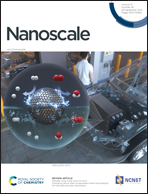A robust surface with superhydrophobicity and underwater superoleophobicity for on-demand oil/water separation†
Abstract
Superhydrophobic and underwater superoleophobic surface combine the superiorities of the two opposite wettabilities. Generally, such a surface is constructed by hydrophilic areas and hydrophobic areas treated with fluorine-containing modifiers. However, the surface energy in a narrow range and poor bonding force between water-loving and water-repelling components make the surface fragile and its wettability unstable. Herein, we present a strategy to fabricate a robust surface with superhydrophobicity and underwater superoleophobicity. Hydrophilic aluminum phosphate as a binder can strongly interact with superhydrophobic titanium dioxide nanoparticles. Mixing the two ingredients to accurately control the surface energy in a narrow range and then spray coating, the superhydrophobic and underwater superoleophobic surfaces are conveniently prepared on diverse substrates. Under acid/base aqueous solution conditions, O2-plasma etching, and sand impingement, the coatings remain superhydrophobic and underwater superoleophobic. Taking advantage of the wettability and robustness of coatings, the as-prepared membranes realize on-demand and multicycle separation under gravity without continuous external stimulus. Importantly, even after 100 sand impingement cycles, the treated membranes still maintain prominent separation performance.



 Please wait while we load your content...
Please wait while we load your content...